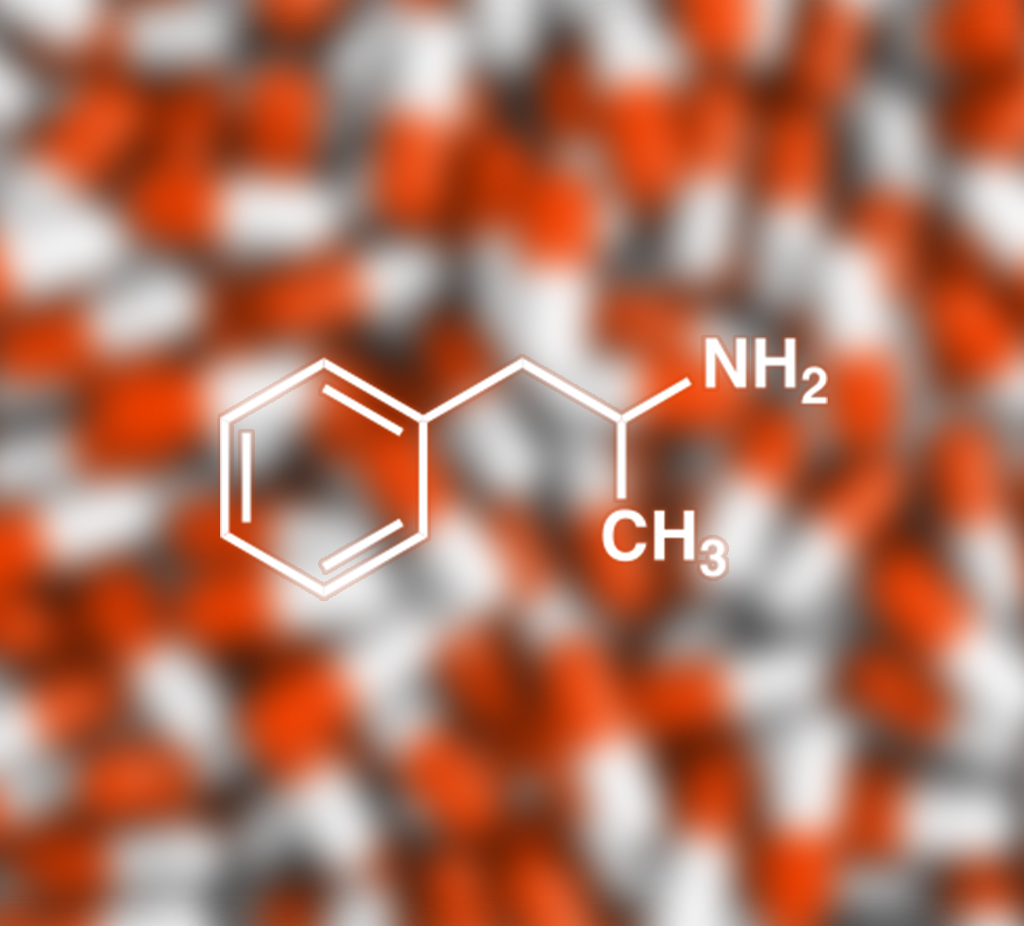
Adderall: Withdrawal Symptoms, Side Effects, and More
Even prescription medications designed to treat a particular condition have their own potential for side effects, misuse, and addiction. Knowing what these risks are is part of knowing how to deal with them and what to do if someone encounters a problem or becomes addicted.
Elite Home Detox is dedicated to giving all of our clients the information they need to safely take the medication they are prescribed and avoid potential risks, including side effects and addiction. In this post, we are going to look at one of the most widely prescribed medications in America, Adderall, and take a deep dive into what this drug is, what it does, and how it compares to other drugs used to treat the same condition, the side effects from use, the potential for addiction, withdrawal symptoms and timeline, and how to get someone help with an addiction in the comfort of their own home.
Table of Contents:
What is Adderall?
Adderall is the brand name of the drug amphetamine/dextroamphetamine. It is a combination drug widely prescribed to both children and adults to treat ADHD and narcolepsy. Its official drug classification is a stimulant, and it is labeled as a controlled substance, meaning that prescriptions of the drug are tightly controlled and regulated.
Though there are a number of drugs prescribed to treat the same condition,

Adderall has become one of the most widely recognizable and widely prescribed drugs on the market today. In fact, there are multiple variants of the drug, and it is a commonly known household name, even for those without or narcolepsy. The components of the drug, amphetamine and dextroamphetamine, are stimulants that act directly on the body’s central nervous system. This allows them to control hyperactivity and impulse control specifically.
How is Adderall taken?
Adderall and its derivative forms are prescribed in pill form and meant to be taken orally. The pills come in a range of dosages from 5 milligrams to 30 milligrams. There are two forms of the drug, the standard quick release Adderall and a longer-acting extended-release formula Adderall XR.
If taken properly, these pills are taken at set intervals to relieve the symptoms of ADHD or keep a person awake during the day if they have narcolepsy.

However, due to the nature of the medication, the effects may diminish over time which may necessitate a change in dosage.
Persons who take more than is prescribed and abuse the drug may become addicted. Adderall abusers may resort to other methods of ingesting the drug, such as crushing the pills and snorting them or melting down the pills and injecting them.
Some abusers may mix Adderall with other substances to amplify the effects or to achieve a different type of “high.” In particular, mixing Adderall with antacids and some other medications increases the body’s absorption rate, which can lead to dangerously high levels of Adderall in the blood.
Adderall, compared to Ritalin
Another largely popular and well-known drug that is used to treat ADHD is the drug Ritalin.
While most drugs that are used to treat the same condition share some similarities, it is important to know that there are actually some key differences between these two widely popular and widely prescribed medications.
As we discussed, the key ingredient in Adderall is a mix of amphetamine and dextroamphetamine.

Ritalin uses entirely different ingredients, with the primary ingredient being methylphenidate hydrochloride. What this difference means for each drug is how the drug metabolizes and, ultimately, how long the effects last.
In the standard variant of Ritalin, the effects of the drug reach maximum efficacy more quickly than Adderall, and the effect lasts for roughly 2 to 3 hours. Conversely, Adderall has a slower release time that builds up to maximum efficacy, but the effects of the drug can last 4 to 6 hours on average. This allows for fewer doses and more control throughout the day. Adderall is also more widely prescribed to adults than Ritalin as well.

Adderall side effects and notes on the use
Adderall, like most any drug, does have some potential for side effects. The standard side effects of Adderall, not accounting for misuse or use from those without ADHD, may include: loss of appetite, weight loss, increased energy, nervousness, trouble sleeping, dry mouth, nausea, vomiting, dizziness, headache, sweating, fever, and diarrhea. In normal users of the drug, these side effects are generally mild and go away over time.
For those that misuse Adderall or who do not have ADHD, the side effects can include: increased heart rate, increased blood pressure, increased blood sugar, fits of anger, muscle tremors/spasms, possible seizures, muscle pain, restlessness, fatigue, weakness, and psychosis.
Some things to consider about Adderall use and side effects are that the function of the drug changes if used by someone without ADHD versus someone who has ADHD. The function also changed for a person diagnosed with narcolepsy and prescribed the drug.
In a person with ADHD, the brain has a problem producing enough dopamine to actively excite the brain. This makes it difficult for the person with ADHD to focus as their brain is constantly looking for a way to release more dopamine. This is where the attention deficit portion of the disorder comes in. The person with ADHD then engages in hyperactive or seemingly hyperactive behavior in order to get the brain to produce more dopamine. It is nearly impossible for a person with ADHD to focus on boring or mundane tasks.
By taking Adderall, the person with ADHD is able to concentrate and focus and is presumably “calmed down.” In reality, the drug helps to “wake the brain up” and regulate the amount of dopamine that is produced so that the person can focus.
For patients with narcolepsy, the reaction is entirely different. People who have narcolepsy suffer from a condition where certain brain cells are dead and no longer producing a chemical called hypocretin. Hypocretin is the chemical in the brain that is responsible for regulating the sleep and wake cycle of the body. With no hypocretin, the person may fall asleep without warning, and experience excessive daytime tiredness, vivid dreams, and even hallucinations.
Adderall works for these people because it helps to produce a chemical in the brain called norepinephrine which is one of the chemicals responsible for making us feel awake. Adderall does not act like a typical stimulant in this case because it does not grant energy but only helps the brain produce a certain chemical.
Lastly, a person without ADHD or narcolepsy who takes Adderall experiences a typical set of symptoms from taking a stimulant. They feel a loss of appetite, increased ability to focus, and a rush of energy. Depending on the dosage, a person may be able to stay awake for days.
Side effects for people without one of the disorders can be dangerous and life-threatening as it increases the heart rate and blood pressure and can even create a sense of euphoria, which, when compounded with existing health issues such as a heart condition, can be deadly.
Understanding Adderall withdrawal
Stopping the use of a drug like Adderall has the potential to cause withdrawal regardless of whether or not a person is addicted to the drug or not.
Before discussing Adderall withdrawal symptoms and the withdrawal timeline, it is important to mention that every case is different and unique, and the length and severity of the withdrawal that a person experiences can vary based on health, length of use, the strength of dosage, underlying medical conditions, and environmental factors.

Adderall reacts with two neurotransmitters in the brain, dopamine, and norepinephrine. Dopamine is the reward chemical, and norepinephrine is responsible for focus, alertness, wakefulness, and thought processes. Both alter your mood, and over time using Adderall creates chemical changes in the brain.
Adderall withdrawal may begin within a day or two after usage has stopped depending on which variant of the drug a person takes. Longer-acting versions of the drug may take longer for the effects to wear off, which may mean the withdrawal may be delayed. Withdrawal typically lasts for a week or two depending on various factors and the brain adjusting to the lack of Adderall.
During withdrawal, people may experience heightened emotions, including anxiety and depression, increased heart rate, flushness, sweating, vomiting, nausea, and even psychosis may occur.
What can Elite Home Detox do for you?
If you know someone suffering from Adderall addiction, it is important to get them to help right away. Elite Home Detox can bring medical care and assistance right to your home without the need for nosy rehab clinics and the loss of discretion and privacy. Our staff is highly trained and ready to assist you.
EHD Can Help You Through The Withdrawal Process
Elite Home Detox is here for you if you need help withdrawing from Adderall or any other addictive drug. We can provide you with the one-on-one care you need while going through detoxification and withdrawal symptoms caused by addiction. And best of all, we come to you! You can make a full and lasting recovery in the comfort of your home with the help of our expert medical team. Contact us today to learn more.


